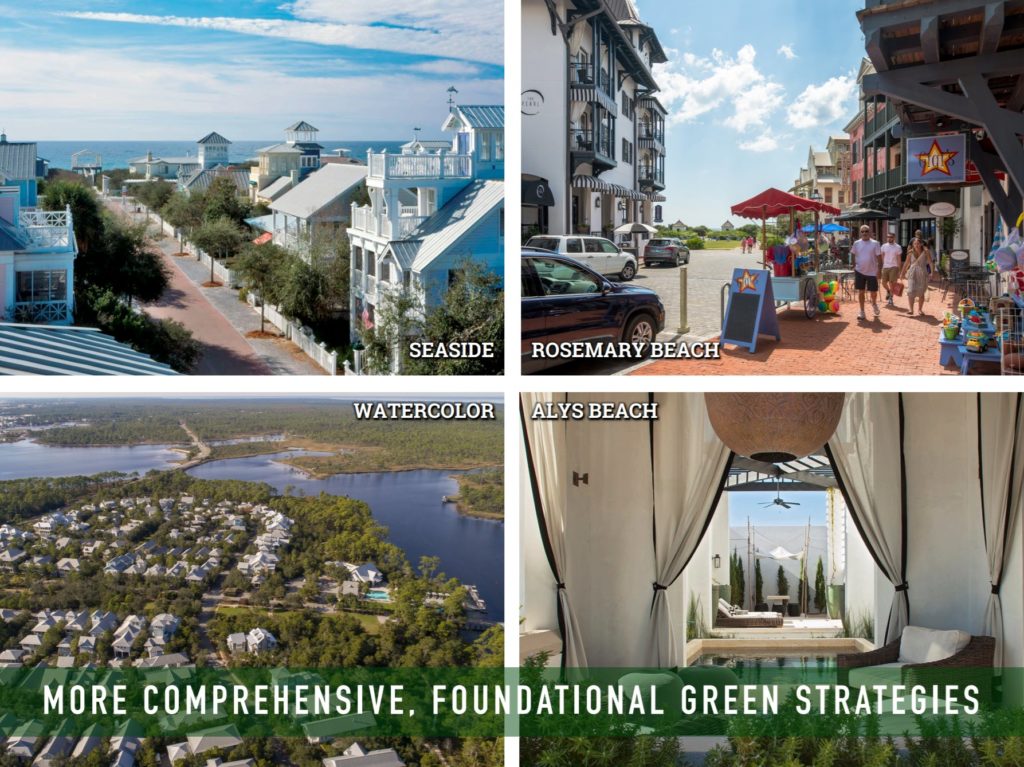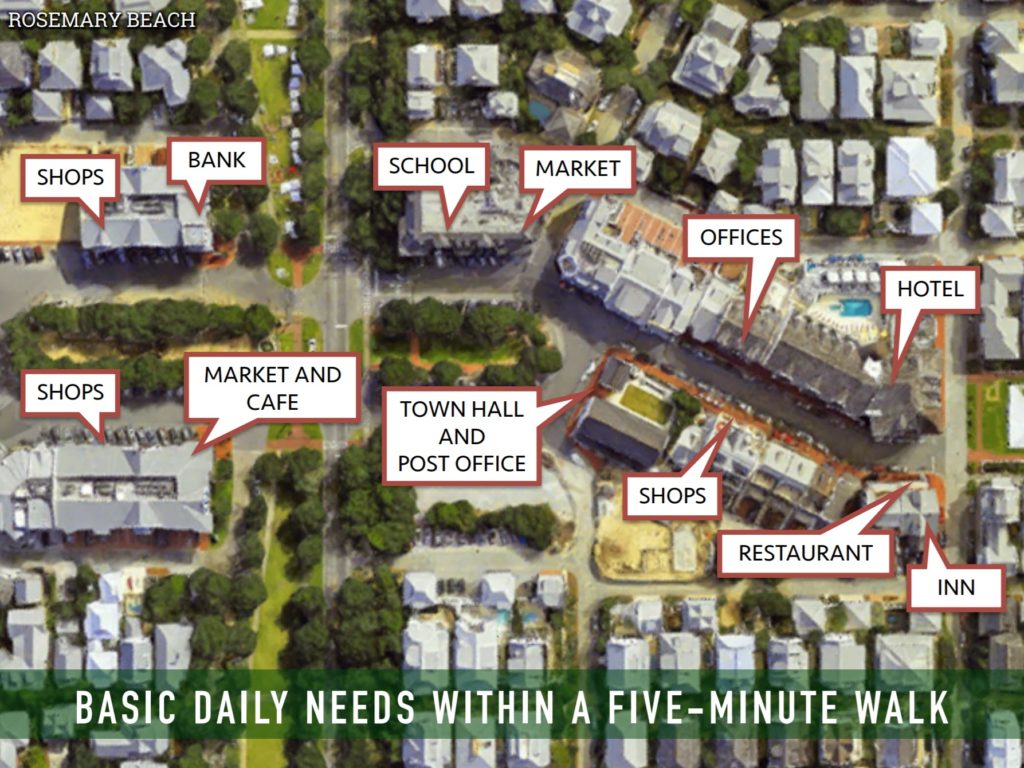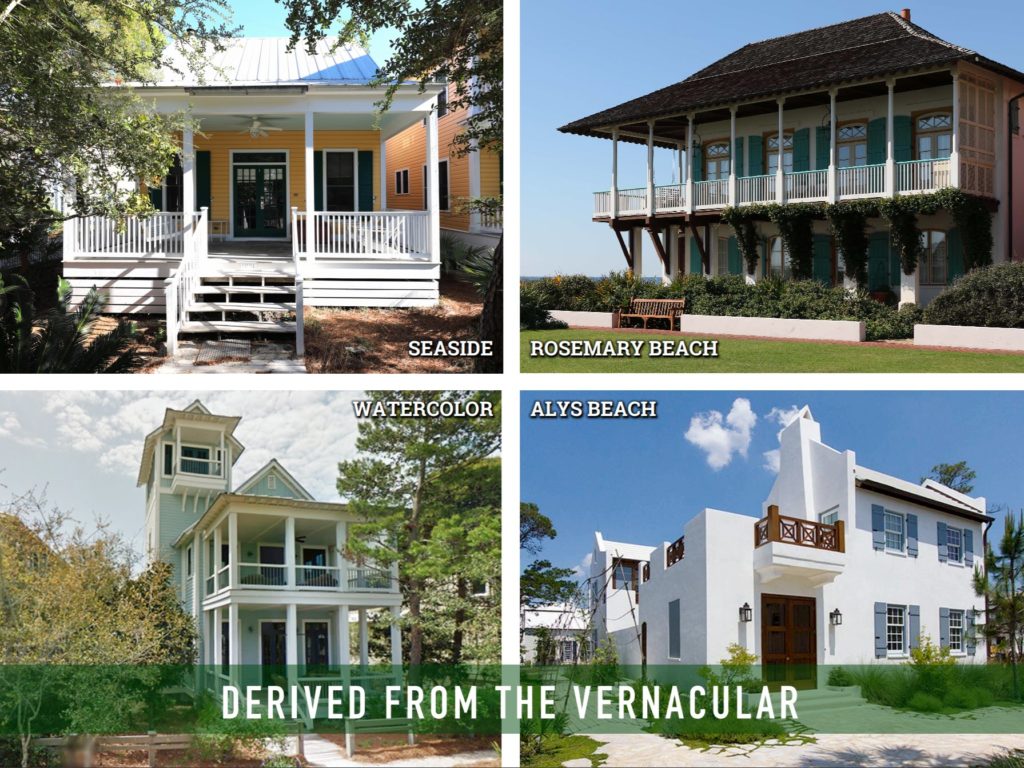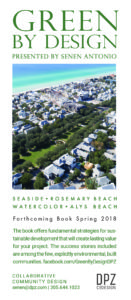Green development is rooted not just in technology, but in a whole body of knowledge. It begins at the regional level, and sustainable development permeates throughout multiple aspects of community.

In his “Green by Design” presentation at the NAHB 2018 International Builders’ Show®, Senen M.A. Antonio, Partner at DPZ CoDESIGN, outlined the key driving principles of green development. Four Florida Panhandle communities—Seaside, Rosemary Beach, Alys Beach and WaterColor—were used to illustrate concepts; the oldest, Seaside, was built in the 1980s. Each community is a model for successfully integrating sustainable development principles.
Here are a few of the key aspects addressed during this presentation.

Neighborhood as the Basis for Development
A neighborhood is often defined by the area that’s covered by a quarter-mile radius. Statistically, a quarter mile has been proven to be the maximum distance an average person will walk for his/her basic needs instead of using a vehicle.
In the “Green by Design” presentation, Senen recommends organizing communities into `neighborhood increments of about 120 – 130 acres (approximately what a quarter mile covers) with a clear node, such as a school or civic center, because typically, people will walk within that increment. The many benefits of designing communities in this fashion include:
- Driving, and thus air and noise pollution, can be reduced.
- Mass transit is facilitated, because the neighborhoods could be connected at each center. providing all residents access to transit within walking distance.
- Walkability is increased, resulting in a healthier community.
- Social culture is stronger, because people are outside more often and have the opportunity to get to know their neighbors.
- The environmental impact is decreased, preserving more land for other uses, such as nature conservation, agricultural and public living spaces.
Diversity and Resilience
Diversity includes mixing single-family residences with apartments, townhouses, condos and accessory dwelling units, as well as blending businesses with other commercial uses, civic centers and schools. Diverse uses and product offerings bolster developments against real estate market volatility, creating greater tenability and sustainability. Last but not least, diversity under Green by Design extends past walls and into patterns of human culture and fosters authentic community. “When people are exposed to different opinions and walks of life, the community becomes more resilient, tolerant and altruistic,” explains Senen.
Sensitive Placement of Development
This Green by Design principle examines how the natural landscape can benefit the development. The Florida Panhandle communities of Seaside, Rosemary Beach, Alys Beach and WaterColor are built up from the dune line—away from the beach and above the mangroves. This has afforded these communities protection against hurricanes and flooding, while other beachside communities in the area have experienced excessive damage and required massive rebuilding efforts after the same storms.

Landscaping with Native Species
Using the vegetation that is already present also comes with numerous benefits. “The fact that the plants were there even before a spade was put in the ground means that those plants are resilient to the local conditions: weather, salt and other natural elements,” explains Senen.
“In the case of [the four Panhandle communities], the trees that were indigenous to the area created a beautiful, natural canopy, which further promotes walkability.”
Complete Streets
Complete streets is defined by Smart Growth America as, “[Streets] designed and operated to enable safe access for all users, including pedestrians, bicyclists, motorists and transit riders of all ages and abilities.”[1]
In short, streets for everyone.
Green by Design communities have streets that are designed and sized appropriately for everyone’s use, and the paving materials used are textured and permeable. Motorists slow down when driving on textured streets, such as bricks or cobblestones, and the materials themselves are permeable—allowing rainwater to penetrate, which results in less stormwater runoff.

Vernacular Homes
Vernacular homes are those that are designed to a local aesthetic—those that fit where they are located. It doesn’t make sense to import Georgian brick into Florida or build a tropical home in the desert of Tucson.
“Buildings that are too outside their cultural context, too strange for their setting, or are typically not well maintained do not sustain over generations,” notes Senen.
Senen concludes, “Green by Design is more than just architecture and technology; it has ramifications across social, economic and cultural aspects. Green development needs to be a holistic approach.”
—Tess Wittler
Photo Credits: Photos provided by DPZ other than the following:
DERIVED FROM THE VERNACULAR
Watercolor Image © 2018 Google/Google Street View (Image date: 3/2015)
BASIC DAILY NEEDS WITHIN A FIVE-MINUTE WALK
Base Image © 2018 Google/Google Earth; Data SIO, NOAA, U.S. Navy, NGA, GEBCO (Image date: 1/2/2012)
 Editor’s Note: A book on this topic is forthcoming in Spring 2018. Green By Design offers fundamental strategies for sustainable development that create lasting value. The success stories described in the book are among the few, explicitly environmental, built communities.
Editor’s Note: A book on this topic is forthcoming in Spring 2018. Green By Design offers fundamental strategies for sustainable development that create lasting value. The success stories described in the book are among the few, explicitly environmental, built communities.
[1] Source: https://smartgrowthamerica.org/program/national-complete-streets-coalition/what-are-complete-streets/

